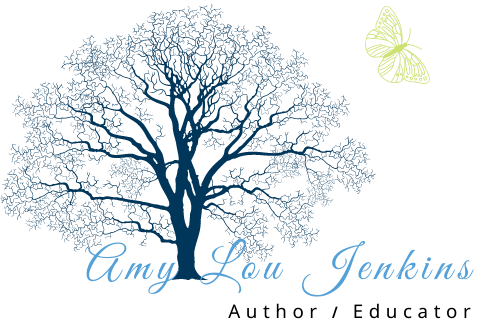
Finding the right theme is one of the most important aspects of writing a memoir.
Other elements include obstacles, emotional beats, life stories, personal style, and honesty.
Six Key Elements of Memoir
Memoirs including Cheryl Strayed’s Wild: From Lost to Found on the Pacific Crest Trail, Tara Westover’s, Educated, and Augusten Burroughs’ Running with Scissors offer the reader true stories of transformation and survival. These successful and acclaimed memoirs use specific elements to convey their story to the reader.
If you've got an itch to write a memoir, write a memoir.
Essential elements of a great memoir include:
1. Theme in Memoir
Your memoir isn’t an account of this thing that happened and then that funny story, and then this tragic thing, and then this unbelievable event. Every compelling memoir includes stories that support the theme and doesn’t include life details and events that do not support the theme. When people read your memoir, how will they be changed? What’s the overarching lesson that you want to relay? A consistent theme is a hallmark of a great memoir. The theme makes an extremely specific story applicable to the reader’s life, an awakening.
theme and transformation/front and center in some titles
Notice the memoir subtitle of Wild: From Lost to Found on the Pacific Crest Trail. The author and the reader know that the hiking story goes deeper and further than one step in front of the other. This author is lost, not so much on the trail, but she is not the person her mother raised her to be, and she’s working to find her better self as she grieves her mother’s death. Universal themes offer readers more than a story; they provide insight into personal transformations. The journey to becoming a better self is a universal theme. Reading this memoir becomes personal for your intended audience. Readers who never owned a pair of hiking boots still drew inspiration from this memoir.
2. Obstacles as Essential Elements
Memoirists will often tell the story of a specific period in their life when they wanted something (such as professional, personal, or career success or survival) or needed something (like relief from addiction or a time to process grief). What obstacles were in the way of your journey of transformation or survival? Identify turning points.
multidimensional obstacles
Tara Westover’s (Educated) family lived in a violent kind of poverty. Her title offers us insight into her battle and transformation. How did she become someone who escaped the isolated and violent world of her family? What would it take to become educated? Her memoir tells her story of survival and achievement. Each member of her family was both an obstacle to her goals and someone who had helped her survive. When Westover wrote about the events and people who stood in her way, she did so in a way a cubist might paint a picture. Her father stood in her way, but sometimes he helped her. The fully fleshed characters who were both obstacles, embarrassments, and beloved family members filled this memoir with authenticity.
don't tell readers about your journey: take them on a journey
You are the protagonist in your story, and readers want to travel with you through the obstacles toward something. Readers need momentum and achievement, and they want to feel a range of emotions. They then have a story that is pertinent to their struggles and the story is transcendent.
3. Emotional Beats
Emotional beats: The journey of transformation is an emotional journey as well as a plotted story. Writing in the first-person point of view allows you to not only tell your story but to relay the emotional impact of each presented life event. What was the most emotionally devastating moment of your story? When were you the most frightened? How did you find joy or contentment? Offer sensory experiences rooted in a specific time and place. Pull back the veil on your layered experience, the experience at a time and now filtered through years and insight.
Readers want to experience your emotional arc alongside your narrative arc. The best writers don’t just tell the reader about the journey, master writers draw their readers to the story so that they have an experience.
4. Life Stories
Stories of what happened as it relates to your theme fill your memoir. How did your transformation take place? What key events moved you toward the change? Who helped? What was the context of the culture, history, family, or workplace? Do your stories animate both the people and places of your life? Memoirists write with transparency and know what to leave in and take out as they consider if the stories support the theme and move the plot along That’s why one of the essential elements of a memoir is gathering supporting memories and points of view from others.
memoirists research
If your memoir is a coming-of-age story, it may be helpful to interview your friends or family members who were witnesses to the times you are writing about. This is good advice for most memoirs. You may find that others remember events differently than you do or have more stories that can help you develop a richer and more authentic story. If your memory falters, stories from others may uncover surprises or wake your own recollections. You may be sure an event happened the year the Cubs won the world series, but discover, with a little research, that 2016 couldn't have been the year of your recalled event about your daughter because she wasn't born until 2017.
the complexity of the past
Differences in recollections, counterintuitively, build authority and authenticity. A writer may say I remember it this way, but my sister remembers it that way. You’ll find dissonances of memory in Burrough’s Running with Scissors. Even though his parents abandoned him to live in the home of an unconventional “therapist” Burroughs still writes with compassion for the point of view and memories of others.
5. Personal Style
Writing memoirs is an opportunity to tell a story from your life, but it’s also a chance to tell that story in a way that nobody else can. That’s where your writing style comes in.
you do you
Fill each page with your personality and point of view. Your style might be tonal: When people read a David Sedaris memoir, they can be sure to expect his signature humor. Generally, you'll want to avoid a very formal writing style, still, your writing style might be more formal or it might include your Tennesse aphorisms. You may use nomenclature specific to being a military veteran or of a daughter raised by a professor and poet. Be a bold form of yourself.
You might present the events of your memoir out of chronological order, relying on flashbacks and flash-forwards to destabilize the reader as you withhold resolutions and develop new challenges on the page. Every chapter satisfies, surprises, and builds momentum. Your style should be present in every line.
6. Honesty
Every reader who picks up a memoir accepts the author’s contract that this is a true story— to the best of the writer’s memory and research ability. Readers are smart. They can tell if something in your memoir feels untrue. If they suspect that the events in the memoir are false, it can permanently damage the relationship between the author and the reader.
complexity of truth
You must be willing to tell your story unflinchingly and honestly. If you tell your account so that you always look good, your reader won’t trust you and will not likely be interested in your book. They will sense your lies and not like you or your memoir. A “true” story that’s a lie isn’t useful. Memoirists are a brave bunch. They understand the complexity of truth. Successful authors of personal stories write about those who stood in their way with a measure of compassion. Be brave and write your memoir with honesty.






